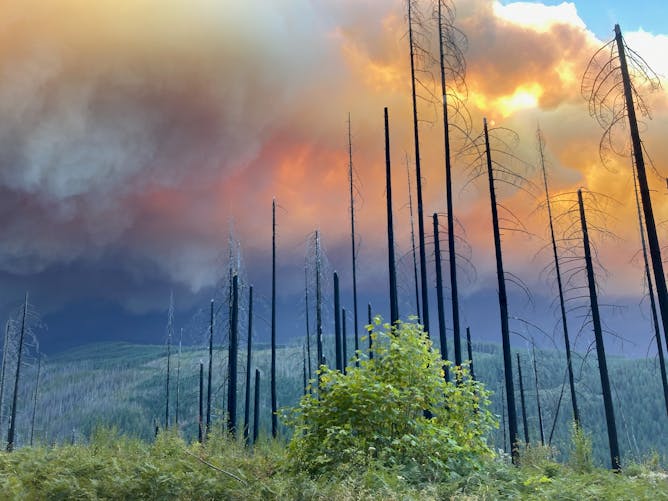|
A string of disastrous wildfires in the West so early in the wildfire season raises the inevitable questions: Why are things so bad and how much worse can will they get? The science is clear that climate change is contributing to longer seasons and more destructive fires, but forest management practices also play a major role in explaining the current situation – and how to address it.
Also in this week’s science and research news: how studying ancient DNA provides clues to the spread of people in east Asia, why a warming Africa will see less malaria but more dengue fever, and how indoor ultraviolet light can combat the coronavirus.
|

The Riverside Fire, viewed from La Dee Flats in the Mount Hood National Forest in Oregon on Sept. 9.
USFS
Steven C. Beda, University of Oregon
Debating whether climate change or forest management has caused the devastating wildfires in California, Washington and Oregon is a false choice.
|

Pulverized ancient bone can provide DNA to scientists for analysis.
Xin Xu Institute of Vertebrate Paleontology and Paleoanthropology
Melinda A. Yang, University of Richmond
By studying the DNA of people who lived in East Asia thousands of years ago, scientists are starting to untangle how the region was populated.
|

How smoke moves inside a bar or outside in fresh air can help in visualizing how the coronavirus spreads.
Shironosova/Getty Images Plus
Byron Erath, Clarkson University; Andrea Ferro, Clarkson University; Goodarz Ahmadi, Clarkson University; Suresh Dhaniyala, Clarkson University
The 6-foot rule for social distancing doesn’t account for all risks, particularly indoors. Here's what everyone needs to understand as cooler weather moves more activities inside.
|